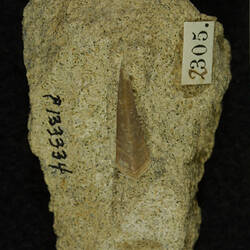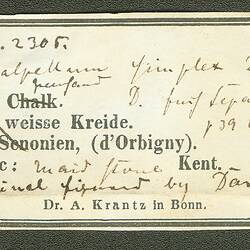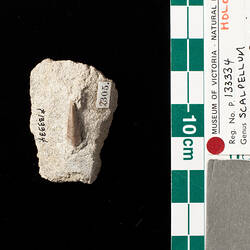Summary
This fossil barnacle specimen is the holotype of a species described by Charles Darwin. Until it was rediscovered in the Museum Victoria's collections in the 1960s it had been thought to be part of the British Museum's Natural History collection (now the Natural History Museum). However, it had been declared lost in the 1930s when the catalogue of barnacle material at the British Museum was compiled. In the 1960s Thomas Darragh, then Curator of Palaeontology at Museum Victoria, noticed some specimen labels in the palaeontology collection with handwritten notes such as "Original figured by Darwin". Going back to Darwin's original descriptions and illustrations, Dr. Darragh was able to confirm that these specimens matched Darwin's material. However, they had never been part of the British Museum's collections.
Before publishing the more famous "On the Origin of Species", Darwin published four monographs on modern and fossil barnacles. In 1854 when he completed his work on barnacles he donated all the material he had collected himself to the British Museum. In addition to making his own collections Darwin had also borrowed material from other collectors which he returned to their owners. This particular specimen was borrowed from John Morris. Some time later Morris, a mollusc specialist who had been professor of Geology at University College, London, sold his fossil collection to the German fossil dealer August Krantz. Some of Morris' material, including this specimen, was part of a collection purchased from Krantz in 1863 by Frederick McCoy, Museum Victoria's first director.
Specimen Details
-
Collection Names
-
Taxon Name
-
Author and date of publication
Darwin, 1851
-
Type Status
Holotype
-
Preferred Common name
barnacle
-
Number Of Specimens
1
-
Sex
Unknown
-
Category
-
Scientific Group
-
Discipline
-
Collecting Areas
-
Type of Item
Taxonomy
-
Kingdom
-
Phylum
-
Subphylum
-
Class
-
Family
-
Genus
-
Species Name
simplex



